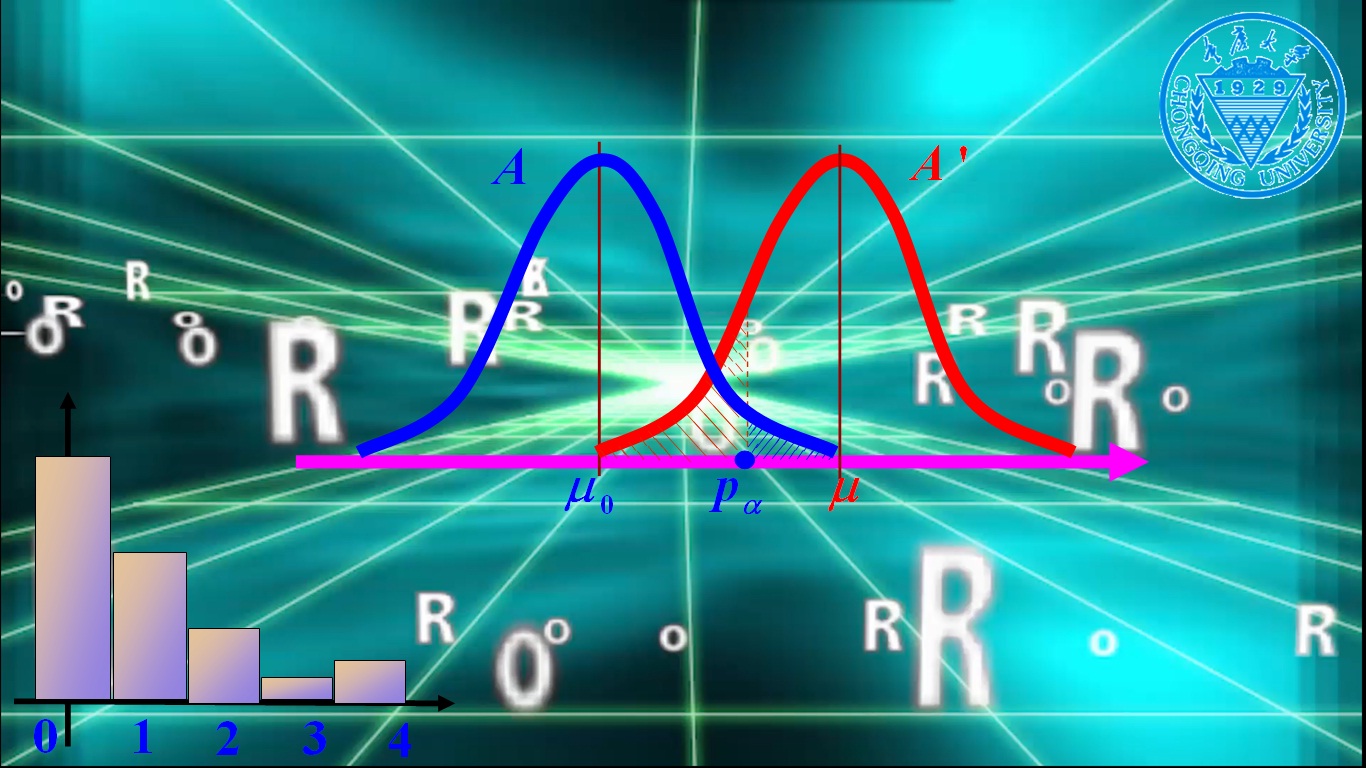
当前课程知识点:Geology and Engineering Geology > 10 Geological Engineering Attributes of Rocks > 10.6 Mechanical Properties of Rock Mass > Chapter 10.6 Mechanical Properties of Rock Mass
返回《Geology and Engineering Geology》慕课在线视频课程列表
返回《Geology and Engineering Geology》慕课在线视频列表
同学们好
欢迎来到地质学与工程地质课程
前面我们学习了
岩石及结构面的力学性质
而且我们知道
结构面的抗剪强度
要比岩石低很多
那么当岩体受外荷载作用时
如果荷载垂直于结构面
它是不是可以通过结构面
传递到对面的结构体
那么如果荷载平行于结构面
那么它还能不能
被传递到对面结构体
是不是不能全部传递过去
而且结构面强度越低
传递的比例也就越小
这也就是说
结构面对于垂直于结构面的
法向应力的传递影响较小
而对于平行于结构面的应力呢
传递将影响比较大
这种结果在整体上
造成了岩体在外荷载的作用下
呈现出内部应力的不连续性
也就是说
在结构面两侧的应力值不等
另一方面也造成了
局部应力集中现象
特别是在裂纹的尖端
应力集中程度非常地明显
所以说结构面内部的
应力分布特征
具有明显的不连续特征
我们再看一下结构面
对岩体强度的影响
这是四个岩体试样
的直剪试验
如果它们的岩石性质 结构面的间距
等结构特征都相同
不同的只是结构面的产状
与剪切的方向的关系
那么各试样的抗剪强度
又是什么关系呢
是不是由左向右
抗剪强度逐渐地增大
这也就是说岩体的抗剪强度
与外荷载作用的方向
有明显的相关性
对于一般的岩石而言
除了那些矿物组成
具有明显的
定向性分布的岩石
比如板岩、片岩、流纹岩等
那么大部分的岩石啊
都是各向同性的
也就是说强度与
外荷载作用方向无关
然而由于受结构面的影响
岩体的强度呈现这种
随外荷载作用方向改变而改变的性质
就是岩体强度的各向异性
与前面的岩石
及结构面的力学性质相似
岩体的力学性质呢
也主要体现在变形和
强度两个方面
根据岩体的应力应变关系特征
可以将它的变形
大致可以划分为四个阶段
第一个阶段
也就是变形的初始阶段
曲线呈现下凹状
这主要是由于岩体内部的
一些张开型结构面
或者是软弱结构面
在外荷载作用下
不断地被压密、闭合
从而产生了一些
不可恢复的塑性变形
第二阶段曲线近似成直线段
也就是线弹性变形阶段
直线的斜率
也就是岩体的弹性模量
随着外荷载作用的增加
岩体内部原有的结构面
逐渐地扩展
并伴随着一些
新的裂隙的产生
直到曲线达到峰值
也就是极限强度
随后岩体内部的结构面
逐渐地贯通形成统一的
滑动面或者是滑动带
进入了岩体全面破坏阶段
岩体的变形最终发展为
沿着贯通的破坏面的滑动
当然岩体的结构类型不同
岩体的应力应变关系曲线
也有很大的差别
比如对完整岩体
它在试验开始时的压密阶段
是不是就不明显
而弹性阶段呢
相对明显
而对于碎裂结构
或者是散体结构的岩体
它的弹性阶段
是不是就不明显了
岩体的变形
还有一个重要特征
就是流变性
也就是说
在外部条件不变的情况下
应力或应变随时间变化的性质
它主要表现为两个方面
也就是蠕变和松弛
蠕变它指的是
在应力一定的条件下
物体的变形随着时间
而逐渐增长的现象
小时候大家都玩过
橡皮泥或泥巴吧
把一个相对坚硬的物体
放在橡皮泥或泥巴上
是不是橡皮泥或泥巴
会逐渐地被压扁挤出啊
这其实就是蠕变的一个表现
而松弛呢
它是指在变形不变的情况下
应力随时间的增长
而逐渐减小的一种现象
在实际工程中
经常会遇到岩体的流变现象
特别是蠕变现象最为普遍
很多工程的失事
其实并不是由于荷载
超过了设计值
而是在较低的应力状况下
岩体发生了蠕变破坏
这五条曲线呢
是不同应力状态下
岩体的典型的蠕变曲线
应力呢从下往上逐渐增加
从整体上来看
曲线大致可以分为三个阶段
第一个阶段是初始蠕变阶段
在这个阶段岩体的变形速率
也就是曲线的斜率
随着时间的增长
而呈现减小的一个趋势
随着时间的增加
变形逐渐趋于平缓
变形速率也基本保持一个常量
也就是进入了平缓蠕变阶段
但是再经过一段时间后
岩体的变形速率会
急剧地增加
直到失稳破坏
从而进入加速蠕变阶段
但可以看出这三个阶段
并不是在所有的
应力状态下都出现的
在较低的应力状态下
只会出现第一或第二阶段
变形速率最终趋于零
比如σ1、σ2状态下
只有当应力等于
或者是超过某一个值时
才会出现后面的
加速蠕变阶段
一般地把出现蠕变破坏的
最低的应力值称为长期强度
岩体的长期强度
主要取决于岩石
及结构面的性质
还有含水量等等
岩体的蠕变
对工程岩体的
稳定性分析非常重要
比如这是一个岩体边坡的
位移监测曲线
边坡在没有工程活动的时候
可以看作是应力恒定的状态
根据曲线我们是不是
可以把整个过程
划分为两个阶段
第一个阶段是初始蠕变阶段
后面变形速率逐渐趋于平缓
也就是平缓蠕变阶段
如果一定时间后
发现变形发生急剧增加
意味着什么
是不是边坡要发生失稳破坏
这样我们是不是可以根据它
来大致判断边坡
或滑坡的演化和发展阶段
从而对滑坡的发生做出预测
这种变形监测呢
在工程中经常用到
比如边坡、滑坡啊
还有地下工程中
而且非常有效
跟岩石的强度类似
岩体的强度也是用来描述
岩体抵抗外荷载破坏的一种能力
包括抗压强度、抗拉强度
和抗剪强度
由于岩体的结构性特征
岩体的强度特征
一般是通过现场的
试验方法来得到
常用的有直剪试验
单轴压缩试验
以及现场三轴试验来获得
关于岩体的强度关系
目前工程中最为常用的是
Hoke-Brown经验方程
Hoke和Brown两个人是
国际上著名的
岩石力学学家
它们根据岩体性质的
理论和经验
用试验的方法得出了
岩块和岩体破坏时的
主应力关系
σ1是破坏时的最大主应力
σ3呢是试样的最小主应力
σc是结构体
也就是岩石的单轴抗压强度
m和s是与岩性和结构面特征
也就是岩体结构有关的常数
可以通过查表来获得
这样我们就可以通过
岩体结构特征
大致地对岩体的强度进行判别
根据这个公式
如果说σ3等于零
是不是可以得到
岩体的单轴抗压强度
如果让σ1等于零
那么是不是可以求得σ3
也就是岩体单轴抗拉强度啊
另外还可以得到
岩体的抗剪强度表达式
那么其中A和B
是与岩体结构有关的一些常数
可以通过查表来获得
好 这节课我们学习了
岩体的力学性质
通过这节课的学习
同学们要了解
岩体的变形特征
掌握岩体的流变特性
及岩体的强度
-0.1 Human Engineering Activities and the Geological Environment
--Chapter 0.1 Human Engineering Activities and the Geological Environment
-0.2 Tasks for Engineering Geology
--Chapter 0.2 Tasks for Engineering Geology
-0 Quiz--Homework
-1.1 Formations and Evolution of the Earth
--Chapter 2.1 Formations and Evolution of the Earth
-1.2 Basic Attributes of the Earth
--Chapter 1.2 Basic Attributes of the Earth
-1.3 Construction of the Geo-sphere and the Geological Processes
--Chapter 1.3 Construction of the Geo-sphere and the Geological Processes
-1 Quiz--Homework
-2.1 Crustal Movement
--Chapter 2.1 Crustal Movement
-2.2 Magmatism
-2.3 Metamorphism
-2.4 Earthquake
-2 Quiz--Homework
-3.1 Introduction
-3.2 Weathering Effects
--chapter 3.2.1 Physical Weathering
--chapter 3.2.2 Chemical and Biological Weathering
--chapter 3.2.3 Weathering Products and Influencing Factors of the Weathering Process
-3.2 Weathering Effects--Homework
-3.3 Geological Effects of the Flowing Surface Water
--chapter 3.3.1 Geologic Process of Temporary Torrents
--chapter 3.3.2.1 River Erosion Effects
--chapter 3.3.2.2 River Transport and Sedimentation Effects
-3.3 Geological Effects of the Flowing Surface Water--Homework
-3.4 Geological Effects of Winds
--Chapter 3.4 Geological Effects of Winds
-3.4 Geological Effects of Winds--Homework
-3.5 Geological Effects of Glaciers
--Chapter 3.5 Geological Effects of Glaciers
-3.5 Geological Effects of Glaciers--Homework
-3 Quiz Easy--Homework
-3 Quiz Enhanced--Homework
-4.1 Minerals
--Chapter 4.1.1 Minerals and Their Morphological Characteristics
--4.1.2 Minerals and Rocks-Mineral Characteristics-Physical and Mechanical Prop
--Chapter 4.1.3 Visual Identification of Common Minerals
-4.1 Minerals--Homework
-4.2 Magmatic Rocks
--Chapter 4.2.1 Main Mineral Compositions of Magmatic Rocks
--Chapter 4.2.2 Texture and Structure of Magmatic Rocks
--Chapter 4.2.3 Common Classification and Identification Methods for Magmatic Rocks
--Chapter 4.2.4 Basic Characteristics of Common Magmatic Rocks Ⅰ
--Chapter 4.2.5 Basic Characteristics of Common Magmatic Rocks Ⅱ
-4.2 Magmatic Rocks--Homework
-4.3 Sedimentary Rocks
--Chapter 4.3.1 Material Compositions of Sedimentary Rocks
--Chapter 4.3.2 Texture and Structure of Sedimentary Rocks
--Chapter 4.3.3 Basic Characteristics of Common Sedimentary Rocks
-4.3 Sedimentary Rocks--Homework
-4.4 Metamorphic Rocks
--Chapter 4.4.1 Mineral Composition and their Texture andStructure
--Chapter 4.4.2 Basic Characteristics of Metamorphic Rocks
-4.4 Metamorphic Rocks--Homework
-第4章 Quiz Easy--Homework
-第4章 Quiz Enhanced--Homework
-5 The Geologic Times
--Chapter 5 The Geologic Times
-5 Quiz--Homework
-6.1 Horizontal Structure and Dipping Structure
--Chapter 6.1 Horizontal Structure and Dipping Structure
-6.2 Fold Structure
-6.3 Fault Structure
--Chapter 6.3.2 Characteristics and Types of Faults
--Chapter 6.3.3 Fault Identification in the Wild
-6 Quiz Easy--Homework
-6 Quiz Enhanced--Homework
-7.1 ntroduction
--Chapter 7.1.1 Types of Geological Maps
--Chapter 7.1.2 Scale of Geological Maps
-7.2 Presentation of the Geological Maps
--Chapter 7.2.1 Formation Lithology
--Chapter 7.2.2 Geological Structure
--Chapter 7.2.3 Contact Relations Between Stratas
-7.3 Reading and Analysis of the Geological Maps
--Chapter 7.3 Reading and Analysis of the Geological Maps
-7 Quiz Easy--Homework
-7 Quiz Enhanced--Homework
-8.1 Basic Conceptuals
--Chapter 8.1 Basic Conceptuals
-8.1 Basic Conceptuals--Homework
-8.2 Reservation and Movements of Ground Water
--Chapter 8.2 Reservation and Movements of Ground Water
-8.2 Reservation and Movements of Ground Water--Homework
-8.3 Movements of the Ground Water
--Chapter 8.3 Movements of the Ground Water
-8.3 Movements of the Ground Water--Homework
-8.4 Ground Water Quality
--Chapter 8.4 Ground Water Quality
-8.4 Ground Water Quality--Homework
-8.5 Ground Water Related Issues on Engineering Geology
--Chapter 8.5 Ground Water Related Issues on Engineering Geology
-8.5 Ground Water Related Issues on Engineering Geoligical Problem--Homework
-8 Quiz Easy--Homework
-8 Quiz Enhanced--Homework
-9.1 Soil Mass
-9.1 Soil Mass--Homework
-9.2 Attributes of Soils
--Chapter 9.2.1 Physical Properties of Soil
--Chapter 9.2.2 Water-Physical Properties of Soil
--Chapter 9.2.3 Mechanical Properties of Soil
-9.2 Attributes of Soils--Homework
-9.3 Engineering Classification of Soils
--Chapter 9.3 Engineering Classification of Soils
-9.4 Special Soils and Its Engineering Attributes
--Chapter 9.4.1 Soft Soil and Its Engimeering Attributes
--Chapter 9.4.2 Loess and Its Engineering Attributes
--Chapter 9.4.3 Expansive Soil adn Its Engineering Attributes
-9.4 Special Soils and Its Engineering Attributes--Homework
-9 Quiz Easy--Homework
-9 Quiz Enhanced--Homework
-10.1 Introduction
--10.1 Introduction--Homework
-10.2 Physical and Water-Physical Properties of Rocks
--Chapter 10.2 Physical and Water-Physical Properties of Rocks
--10.2 Physical and Water-Physical Properties of Rocks--Homework
-10.3 Mechanical Properties of Rocks
--Chapter 10.3.1 Deformation Characteristics
--10.3 Mechanical Properties of Rocks--Homework
-10.4 Structural Plane and Structural Body of Rock Mass
--Chapter 10.4 Structural Plane and Structural Body of Rock Mass
--10.4 Structural Plane and Structural Body of Rock Mass--Homework
-10.5 Features and Mechanical Properties of the Structural Plane
--Chapter 10.5.1 Properties of Structural Plane
--Chapter 10.5.2 Mechanical Properties of Structural Plane
--10.5 Features and Mechanical Properties of the Structural Plane--Homework
-10.6 Mechanical Properties of Rock Mass
--Chapter 10.6 Mechanical Properties of Rock Mass
--10.6 Mechanical Properties of Rock Mass--Homework
-10.7 Engineering Classification of Rock Mass
--Chapter 10.7.1 Engineering Classification of Rock Mass Ⅰ
--Chapter 10.7.2 Engineering Classification of Rock Mass Ⅱ
--10.7 Engineering Classification of Rock Mass--Homework
-10 Quiz Easy--Homework
-10 Quiz Enhanced--Homework
-11.1 Slope Deformation and Destruction
--Chapter 11.1.1 Slope Deformation
--Chapter 11.1.2 Slope Destruction
-11.1 Analysis on the Stability of Slopes--Homework
-11.2 Factors on the Stability of Slopes
--Chapter 11.2 Factors on the Stability of Slopes
-11.3 Analysis on the Stability of Slopes
--Chapter 11.3 Analysis on the Stability of Slopes
-11.3 Analysis on the Stability of Slopes--Homework
-11.4 Structural Analysis Method on Rocky Slope Stability
--Chapter 11.4.1 Stereographic Projection Method Ⅰ
--Chapter 11.4.2 Stereographic Projection Method Ⅱ
-11.5 Measures for Preventing and Controlling the Slope Deformation
--Chapter 11.5 Measures for Preventing and Controlling the Slope Deformation
-11.5 Measures for Preventing and Controlling the Slope Deformation--Homework
-11 Quiz Easy--Homework
-11 Quiz Enhanced--Homework
-12.1 Underground Caverns and the Stress Distribution
--Chapter 12.1 Underground Caverns and the Stress Distribution
-12.1 Underground Caverns and the Stress Distribution--Homework
-12.2 Deformation and Destruction of the Adjacent Rocks
--Chapter 12.2.1 Brittle Adjacent Rock
--Chapter 12.2.2 Plastic Surrounding Rock and Surrounding Rock Stability Sign
-12.3 Factors on Stability of the Adjacent Rocks
--Chapter 12.3 Factors on Stability of the Adjacent Rocks
-12.4 Measures for Preventing Instability of the Adjacent Rocks
--Chapter 12.4 Measures for Preventing Instability of the Adjacent Rocks
-12 Quiz--Homework
-13.1 Dam Foundation of the Water Conservancy Project
--Chapter 13.1.1 Dam Types and Requirements for Engineering Geological Conditions
--Chapter 13.1.2 Deformation Failure Mode and Stability Analysis
-13.2 Common Methods of Foundation Constructions
--Chapter 13.2 Common Methods of Foundation Constructions
-13 Quiz--Homework
-14.1 Reservoir Leakage
--Chapter 14.1 Reservoir Leakage
-14.2 Stability of the Reservoir Bank
--Chapter 14.2 Stability of the Reservoir Bank
-14.3 Reservoir Surrounding Immersions and Sedimentations
--Chapter 14.3 Reservoir Surrounding Immersions and Sedimentations
-14 Quiz--Homework
-15.1 Introduction
-15.2 Engineering Geological Mapping
--Chapter 15.2.1 Research Content
--Chapter 15.2.2 Structural Plane Statistics
-15.3 Engineering Geological Exploration and Field Experiments
--Chapter 15.3 Engineering Geological Exploration and Field Experiments
-15.4 Instructions on the Geological Compass
--Chapter 15.4 Instructions on the Geological Compass
- Quiz--Homework







